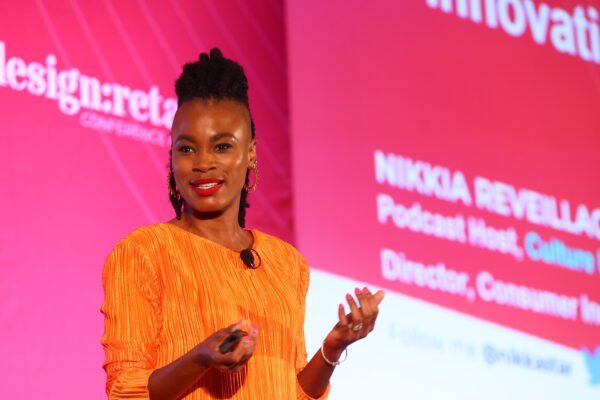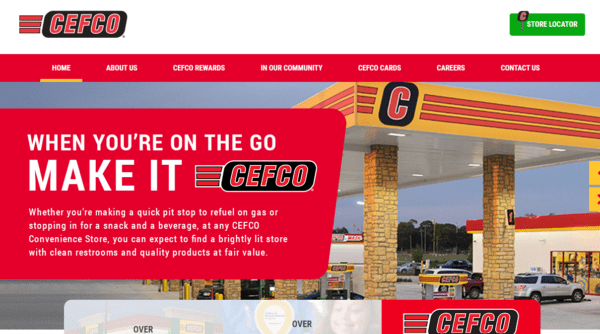RICE23: Netflix Insights Exec — ‘The Heart of Innovation is Understanding Humans’


Netflix has always been data-obsessed, long before that was seen as a must-have for any organization. And that focus on having a granular understanding of its customers and their behaviors has helped Netflix reshape an entire industry. According to Nikkia Reveillac, Netflix’s Director of Consumer Insights, it’s something that any company can do with the right approach and focus.
“Oftentimes research is treated as a support function, but at Netflix we are very much the tip of the spear,” Reveillac said at a keynote presentation at the Retail Innovation Conference and Expo in Chicago. “The aperture for innovation and what could be next is led by this obsession of understanding people and how they’re using their time. Companies think about things like mergers and acquisitions and where to play — research should be at the forefront [of these decisions], because it’s research that gives you that pulse of what’s going on in the world; what’s going on with Gen Z; how do we reconcile the way that consumption patterns are splintering as new options emerge?”
But despite consumer insights and innovation’s centrality to making the right business moves, Reveillac said most companies approach them the wrong way — focusing on the data instead of the people behind it.
Reveillac has led consumer insights at some of the biggest companies in the world, first for 14 years at Colgate-Palmolive. In 2019 she moved to Twitter and become the Global Head of Research in 2020, which she described as one of “the most tumultuous times in our history.” But that tumult was a great opportunity for her to explore her idea that “people obsession” is what truly drives innovation, not data. Now, at Netflix, she is “continuing to pressure test this hypothesis.
“At the heart of innovation is a deep understanding of humans and people,” she said. “Companies that have insights and analytics functions, companies that understand how to leverage this humanity and to build from that, are more likely to exceed their business goals.”
Here are some of the tips she gave about how to successfully innovate at any organization.
First, Make Sure You Truly Understand the Problem
Too often organizations start with an internal understanding of a problem without asking what their customers really want or need, said Reveillac. She shared an example from her Colgate-Palmolive days. The company wanted to grow the presence of Colgate toothpaste in sub-Saharan Africa — part of a region that encompassed 99 countries but only accounted for 6% of sales at the time.
The team decided that the way to do this was to create a cheaper product for that market, a typical tactic in this kind of scenario. The plan was to create small toothpaste sachets that could be sold at the open air markets that abound in that region, where supermarkets are less common.
“Was people obsession here at the idea generation phase? Not really,” recounted Reveillac. “Sitting in that room with a team of researchers who were in Kenya and Johannesburg, I remember thinking, ‘What is my responsibility here? Do I just continue to move this forward and do the research, because the idea’s done, or do I challenge the status quo?’ [In the end] I asked the question — what do we know about what people in this region are actually doing?”
Asking that question ultimately changed the company’s entire approach, because the research revealed that the problem was not the cost of toothpaste but rather behaviors inherent to the region — primarily the use of chewing sticks instead of toothpaste. Instead of flooding open-air markets with toothpaste sachets, the company embarked on an education and outreach campaign that included NGOs and health care providers, to connect with consumers and introduce the benefits of its product in Africa.
“The sharper you can get in understanding the problem, the more likely that the solution you come up with is going to delight and surprise,” said Reveillac.
Push to Understand the ‘Why’
Today, getting data is not the problem for most companies, but taking actionable insights from that data that serves business goals is much harder. In order to move from insights to action, Reveillac said companies must understand not just their consumers’ behaviors and opinions, but also the “why” behind them.
Reveillac pointed to Twitter’s decision to move from 140 to 280 characters per tweet. At the time of the change, users were incredibly vocal in their displeasure. The 140-character limit was seen by many as a core value proposition of the platform, and when that changed, users let the world know how much, and how vehemently, they disagreed with the decision.
And yet behind the scenes, Twitter knew it was making the right move because the shift was driven by in-depth research into user behaviors and patterns, as well as problems users had expressed such as the inability to have deeper conversations with such a limited amount of space.
Twitter Co-founder and then-CEO Jack Dorsey stood by his guns: “This is a small change, but a big move for us,” Dorsey said in a tweet responding to the user outcry. “140 was an arbitrary choice based on the 160-character SMS limit. Proud of how thoughtful the team has been in solving a real problem people have when trying to tweet, and at the same time maintaining our brevity, speed and essence.”
The move was ultimately a successful one for the company.
Don’t Get Too Caught Up in Being Creative
It may sound counterintuitive, but according to Reveillac unfettered creativity can actually get in the way of innovation.
“This is something that I think we’re all too familiar with — somebody in the organization, maybe someone very senior, has an idea and there’s momentum that starts to build inside the company,” she said. “In organizations that are more monocultural, where people come from the same background, similar experiences, similar schools, this is even worse, because what happens is that one person’s idea gets a resounding amount of commitment because everybody’s like, ‘I would use that too.’ However, in that obsession with your own idea and that desire to get it out there as fast as possible, you miss the opportunity to check yourself. Rushing to market because there’s this sense of momentum around an idea that everybody loves is one of the traps we tend to fall into. That people obsession falls by the wayside, or we misconstrue our obsession for being representative of everybody else’s.”
Creativity without a purpose behind it isn’t useful, according to Reveillac, and can often lead companies down the wrong path. Instead, ideas should stem from the problems you are trying to solve. “What often happens is there is a focus on the quantity of the ideas versus the quality of the problem,” she said. “It’s better to focus on the quality of the problem, even though having a bunch of ideas is really exciting. The more time you spend obsessing about a problem and getting specific the better, because the awareness of the challenge is the most important thing.”
However, doing this successfully requires not only a strong consumers insights team, but team members who are able to match the results of research with actions that will be beneficial to the organization.
“A strong insights function is a combination of good access to data and an insights team that’s able to match technical excellence with an ability to tell stories, connect dots across the organization and advocate [for] the insights,” said Reveillac. “You can have all the data in the world, [but you also need] the ability to synthesize it and move it from insights to action.”











